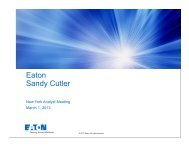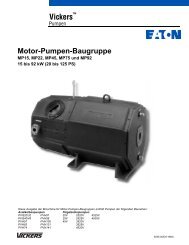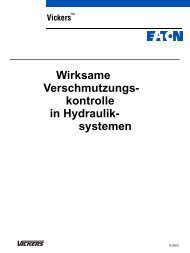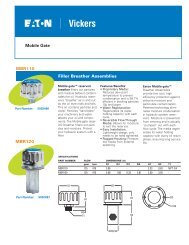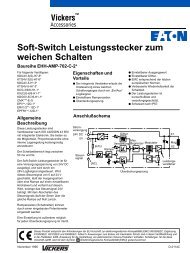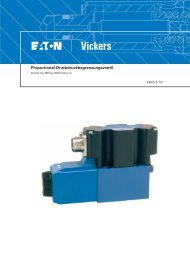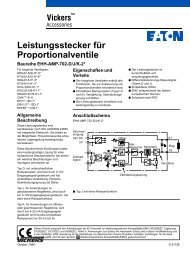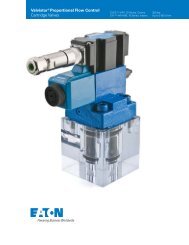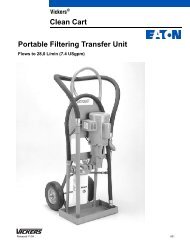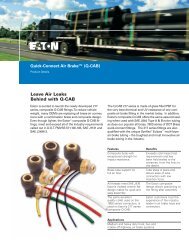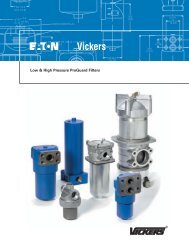Steering Catalog - Eaton Corporation
Steering Catalog - Eaton Corporation
Steering Catalog - Eaton Corporation
Create successful ePaper yourself
Turn your PDF publications into a flip-book with our unique Google optimized e-Paper software.
Sizing and Application—<br />
Ackermann Type <strong>Steering</strong> Continued<br />
Step Three:<br />
Selecting <strong>Steering</strong><br />
Unit Displacement<br />
Before proceeding further, a decision must be made as to the<br />
number of steering wheel revolutions desired for the application<br />
to steer the axle from full one side to the other. Depending<br />
on vehicle usage, this will vary, normally 2 1/2 to 5 1/2<br />
with 4 being a good typical value<br />
Displ. =<br />
V = Volume full stroke<br />
N = number of steering wheel revolutions lock to lock<br />
Once this calculation is complete, select the closest standard<br />
steering unit displacement from the catalog information.<br />
Now the number of steering wheel revolutions should be<br />
recalculated.<br />
N =<br />
V<br />
N<br />
V<br />
displ.<br />
displ. = <strong>Steering</strong> unit displacement per revolution.<br />
Note: for different cylinder applications, the cylinder volume will be different<br />
for right and left turns and the value N will vary accordingly.<br />
Step Four:<br />
Calculating Required<br />
Pump Flow<br />
Pump sizing is important to assure adequate power for steering<br />
under all operating conditions. The required pump flow<br />
can be calculated by the following equation.<br />
Q = Rmax. x displ.<br />
P<br />
Q (L/min): Required pump flow.<br />
P<br />
R = Max. steering wheel input of steering control<br />
max<br />
unit (SCU).<br />
displ. = Displacement of steering control unit per<br />
revolution.<br />
Before proceeding to evaluation required pump flow the maximum<br />
required steering wheel speed must be determined.<br />
Typically 120 revolutions per minute (RPM) is used for Rmax.<br />
• It is important at engine low idle condition that the maximum<br />
steering wheel speed should be more than 60 rpm.<br />
• For engine normal idle condition, maximum steering<br />
wheel speed should be more than 100 rpm if possible.<br />
• When using open center SCU connected with pump<br />
directly, maximum pump flow should be less than 1.4<br />
times of SCU rated flow. Higher flow into SCU increases<br />
pressure-loss of the steering system. If higher flow is<br />
unavoidable, install a flow divider valve into the system or<br />
use a load sensing system.<br />
EATON <strong>Steering</strong> <strong>Catalog</strong> C-STOV-MC001-E2 September 2011 95




